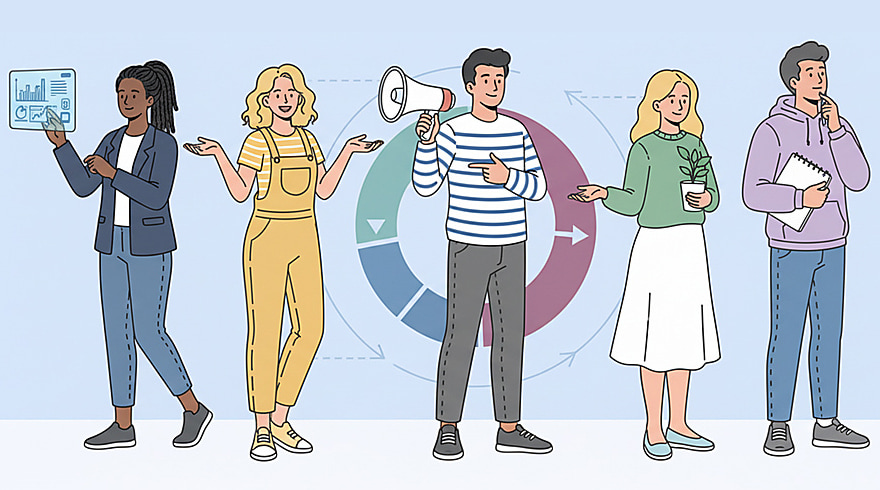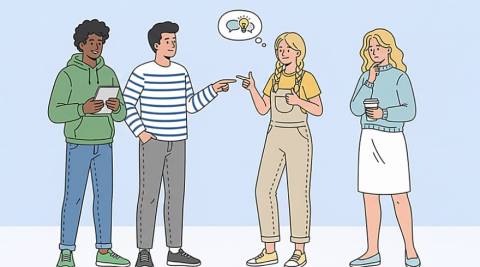Mastering the Communication Style Assessment: A Step-by-Step Guide to Behavioral Insights

What a Communication Style Evaluation Really Measures
Strong relationships, clear expectations, and dependable collaboration all hinge on how messages are crafted and received. Rather than focusing on personality labels, a rigorous evaluation looks at observable patterns like pacing, structure, tone, and responsiveness under pressure. It explores how people adapt to different audiences, how they request resources, and how they resolve misunderstandings when the stakes rise. With that lens, teams can reduce friction, accelerate decisions, and build a shared vocabulary for candor without creating defensiveness. In practice, the communication style assessment process links everyday interactions to measurable behaviors, enabling constructive feedback without guesswork. Facilitators map tendencies such as directness, empathy, and detail orientation to concrete outcomes like cycle time, error rates, and satisfaction. The result is a practical playbook that shows where to amplify strengths and where to introduce small, high‑leverage habits that increase clarity.
When groups adopt a communication styles assessment, they gain a common frame for diagnosing bottlenecks and misreads. Leaders can see where handoffs fail, where silence masks uncertainty, and where overload causes important data to get lost. More importantly, the framework invites nuance, honoring context such as culture, language, neurodiversity, and power dynamics so that shifts are humane as well as effective.
- Focus on observable behaviors, not unchangeable traits.
- Separate preference from performance impact to avoid bias.
- Attend to situational context such as urgency, medium, and audience.
- Translate insight into one micro‑habit at a time to sustain momentum.
Why Assessing Style Accelerates Performance
Organizations that communicate with precision shorten feedback loops, reduce rework, and build trust quickly. When teams make their implicit norms explicit, they can onboard faster and collaborate across functions without constant clarification. That clarity compounds in moments of stress, where pre‑agreed protocols help people maintain psychological safety while still moving decisively toward outcomes.
For leadership pipelines, a communication assessment supports succession planning by revealing how candidates influence, coach, and negotiate. Data‑rich insights expose both bright spots and derailers, allowing targeted development rather than generic training. The ripple effect is visible in cross‑team handoffs, stakeholder confidence, and customer experience metrics that matter.
Equally vital, a communication style self-assessment empowers individuals to notice habitual defaults and intentional alternatives. Self‑awareness enables strategic switching between concise directives and exploratory dialogue, depending on the moment. That adaptability becomes a durable advantage, especially in hybrid settings where nuance can vanish through text‑only channels.
- Reduce costly misunderstandings by aligning expectations upfront.
- Improve inclusion by recognizing varied comfort zones and formats.
- Boost velocity by agreeing on decisions, owners, and timelines.
- Elevate coaching with concrete, behavior‑based feedback rather than vague opinions.
Models, Dimensions, and a Quick Comparison
Most evidence‑based models cluster behaviors across dimensions like assertiveness, responsiveness, structure, and emotional tone. While labels differ, the practical question remains the same: which situations reward which patterns, and how do we flex responsibly without erasing authenticity. A good model illuminates trade‑offs, such as when brevity trims ambiguity versus when brevity starves context and creates churn.
Exploratory pilots may begin with a free online communication style assessment as a low‑risk way to build interest and gather baseline observations. Early findings can steer whether your team needs coaching on listening depth, message architecture, conversational pacing, or conflict hygiene. From there, you can calibrate the rigor of your approach and decide which analytics to invest in.
| Style Dimension | Typical Behaviors | Risk If Overused | Coaching Prompt |
|---|---|---|---|
| Directness | Clear asks, concise phrasing, quick decisions | Perceived bluntness, missed nuance | Where could one clarifying question improve buy‑in |
| Responsiveness | Active listening, paraphrasing, paced replies | Delay in decisions, ambiguity creep | What agreement can you capture in writing within the meeting |
| Structure | Agenda setting, numbered steps, summaries | Rigidity, creativity constraints | Where can you invite divergence before converging |
| Relational Tone | Empathy, acknowledgment, inclusive language | Over‑accommodation, muddled accountability | How will you pair warmth with a crisp request and deadline |
To deepen insight, a guided communication styles self-assessment can be paired with peer reflections to triangulate patterns. Quantitative scores highlight tendencies, while qualitative examples reveal the situational nuance behind those numbers. Together, they form a credible narrative that people can act on without feeling boxed in.
- Blend quantitative ratings with illustrative anecdotes.
- Compare self‑perception with colleague perspectives to expose gaps.
- Translate dimensions into specific meeting, email, and chat behaviors.
Step‑by‑Step: Running a Valid Assessment Process
Reliability begins with clarity of purpose, clean sampling, and transparent scoring rules. Before launching anything, define the decisions the data will inform and the behaviors you will measure. Then choose instruments that fit your culture, language needs, and privacy thresholds, and pilot them with a small cohort to refine wording and logistics.
A facilitator can launch a brief communication styles self-assessment exercise ahead of a workshop to prime personal reflection and set psychological safety. That warm‑up paves the way for deeper inquiry by making it normal to examine habits without self‑judgment. It also seeds specificity, so participants arrive ready with examples and curiosity rather than defensiveness.
After the group session, a streamlined communication self-assessment allows individuals to convert insights into two or three actionable experiments. Clear commitments, owner accountability, and check‑in dates keep momentum going. When people witness small wins quickly, they are more likely to sustain the new behaviors and share them across teams.
- Clarify purpose and outcomes before selecting instruments.
- Pilot with a diverse sample to catch bias and ambiguity.
- Protect confidentiality and communicate how data will be used.
- Schedule follow‑ups to review experiments, evidence, and adjustments.
Interpreting Scores and Translating Insight into Action
Numbers illuminate tendencies, but meaning comes from context, conversation, and longitudinal comparison. Treat initial findings as hypotheses to test in real workflows rather than verdicts to accept blindly. When translating insight into plans, aim for micro‑habits that are easy to repeat, noticeable to others, and tied to performance metrics you already track.
For budget‑sensitive contexts, an entry‑level communication style assessment free option can spark curiosity and demonstrate value before investing in advanced analytics. The key is to pair any instrument with disciplined follow‑through, such as meeting retro prompts and accountability partners. That pairing converts novelty into durable practice that benefits customers and colleagues alike.
When scaling across departments, an enterprise‑grade communication styles assessment tool can streamline administration, benchmarking, and progress dashboards. Consistent reporting enables leaders to spot bright spots, address hotspots, and align coaching with strategic priorities. Over time, the cadence of review creates a culture where feedback is expected, routine, and constructive.
- Align behavior changes with measurable outcomes and timelines.
- Use before‑and‑after artifacts to validate progress objectively.
- Celebrate wins publicly to normalize the new habits and sustain energy.
Pitfalls, Bias, and Inclusive Communication
Any instrument can be misused if it is treated as a label, a weapon, or a hiring gate rather than a catalyst for growth. The most common errors include overgeneralizing from small samples, ignoring culture and language differences, and skipping the follow‑through that turns insight into change. Guardrails such as clear ethics statements and opt‑in consent help minimize risk and protect trust.
Inclusion requires that we value multiple ways of expressing clarity, whether through linear logic, narrative illustrations, visual mapping, or brief voice notes. Hybrid and global teams benefit from explicit agreements about tools, response windows, and escalation paths. When norms are co‑created, marginalized voices are more likely to contribute and be heard.
- Never use results as a proxy for intelligence or potential.
- Respect neurodiversity by offering varied channels and timing.
- Revisit norms periodically to reflect evolving needs and contexts.
FAQ: Communication Style Assessment Questions Answered
How often should teams reassess their patterns?
Most teams benefit from a lightweight pulse every quarter and a deeper review biannually. In many cases, a structured self-assessment of communication reveals new friction points as roles, tools, and priorities shift. Pairing the cadence with retros and goal cycles ensures findings translate into timely action.
What evidence shows that style work improves performance?
Organizations that adopt clear norms often report faster decisions, fewer misfires, and higher stakeholder satisfaction. While correlation varies by context, leaders consistently note reductions in rework and smoother cross‑functional coordination after targeted habit changes. Documenting artifacts like meeting notes and turnaround times makes improvements visible and credible.
How do we prevent the process from feeling like a personality label?
The safeguard is to anchor everything in observable behavior, specific situations, and mutual agreements. Facilitators should emphasize that patterns are context-dependent and malleable through practice. When people co‑design experiments, the work feels empowering rather than prescriptive.
What should global or hybrid teams consider first?
Distributed groups need explicit agreements on channels, response expectations, and escalation rules. For global teams, a culturally attuned communications style assessment helps adapt norms to time zones, language preferences, and power distance. It also encourages leaders to model clarity by confirming decisions and owners in writing.
Where do we start if we have limited time?
Begin with a single meeting type and define the success criteria, agenda template, and decision protocol. A small pilot limits risk and builds momentum, especially when outcomes are made visible quickly. Once the prototype works, scale it to other forums using the same disciplined playbook.
Latest News



